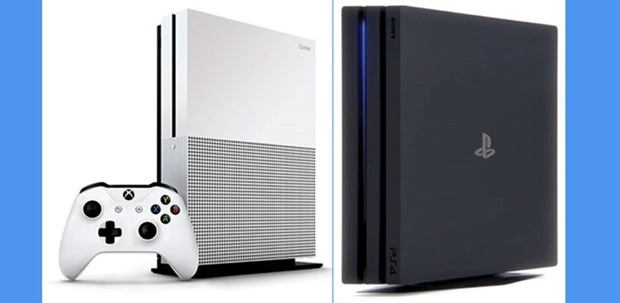It has been three years since both Sony PlayStation 4 and Microsoft Xbox One came out. And it is about time for both to get mid-cycle refreshes. Consoles generally tend to have a lifespan of 6-8 years, with plenty of mid-cycle changes and tweaks, mostly focused on fixing hardware issues (if any) and making the consoles smaller and cheaper.
This generation, the equation is somewhat different, probably because of the rise of 4K and High Dynamic Range (HDR) televisions and content, especially this year. Both manufacturers seem to be focused on bringing the 4K experience to the living room via their consoles, and both have taken drastically different approaches.
Microsoft has come out with the Xbox One S, which is more in line with what traditionally mid-cycle console refreshes are all about. The focus here is clearly on refinement, with the console being about 40% smaller than the Xbox One and about 600 grams lighter. The console also comes with the power supply unit built in (no more Xbox Onesque adaptor), reducing the clutter in your living room.
It also comes with a slight bump in processing heft, enabling HDR and 4K upscaling of content. What this means is that the console will continue to render games at its native resolution and upscale the content to play on a 4K screen. This is similar in effect to what Blu Ray players do with DVDs – that is they upscale DVD resolutions to play on HD screens.
The biggest selling point for non-gamers here is the addition of a 4K Blu Ray player in the Xbox One S. What this means is that in addition to the console, you are getting a 4K Blu Ray player for $300, which is less than many dedicated 4K Blu Ray players in the market. Combined with added gaming capabilities, this clearly will be a big selling point for many people.
The HDMI port and Wi-Fi capabilities have also been improved. The console now has a built-in IR blaster and support for Bluetooth 4.0. The Kinect port, however, has been removed, which signals all but the end for the accessory. If you are a Kinect user or fan, expect fewer and fewer games for it going forward. This is a big change from the launch period, when all consoles came bundled with Kinect and it was a big part of Microsoft’s strategy for the living room dominance.
Sony has gone a much different route with its mid-cycle refresh. Sure it has a smaller and thinner version of its PlayStation 4, the PS 4 Slim, which is both smaller and lighter while offering the same performance that the original PS 4 game. Nothing to get excited here.
But the Japanese giant has gone ahead and also released a second console, PS4 Pro, which more than doubles the graphical processing power of the PS4 (which was already more powerful than the Xbox One). You will get 4.2TFLOP of processing capability in the PS4 Pro, compared to just 1.8TFLOP in PS4 and PS4 Slim. You also get an additional 1GB of RAM for the console’s non-gaming systems, so developers can use all 8GB of RAM on the console for their games. The CPU also gets a bump, from 1.6GHz in the PS4 to 2.1GHz.
What all of this translates to is the ability to render games natively in 4K (remember, the Xbox One S is just upscaling the games). Of course, the console also offers 4K upscaling for games that do not support 4K. Expect the extra processing heft to also deliver a better experience for the recently announced and much-praised PlayStation VR, which also currently happens to be the cheapest full-VR experience.
While all future games will be playable on both PS4 and PS4 Pro, they will come with the option to enable Pro mode to offer better graphics fidelity on the more powerful hardware. Sony has enabled HDR across its lineup, so you do not have to worry about not being able to watch your games unfold on the screen in HDR (assuming your television supports it).
You will be paying about 100 dollars extra for the PS4 Pro, compared to the PS4 and the Xbox One S. That said if you do not much care about playing 4K movies from your console and are instead interested in simply buying the most powerful console currently available in the market, then PS4 Pro will become your default choice.
This equation may change with Microsoft’s Project Scorpio console due out next year. Scorpio is being touted by Microsoft as the most powerful console ever. It will play native 4K games and will have support for high-end PC VR headsets too. But that one is about a year away.
Nintendo will also be releasing its latest console, the Switch, in March. The Nintendo Switch foregoes the specs war in favour of a more unique form factor: the ability to switch between a living room console and a handheld device. With Nintendo’s unique library of games that do not appear on other consoles, the Switch is poised to make a strong case for itself to be a console that sits alongside an Xbox One or a PS4, maybe even replace them.

The Xbox One S is 40% smaller than the Xbox One. RIGHT: The PlayStation 4 Pro offers over twice the graphical processing power in the PS4.


